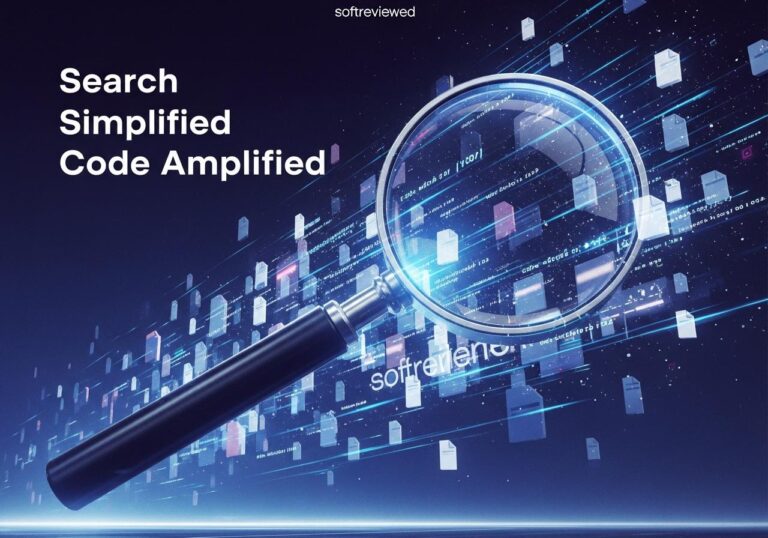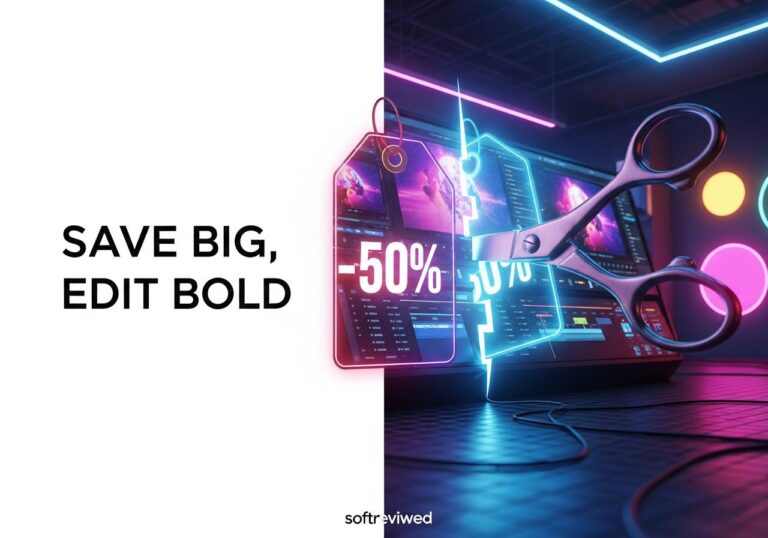Google Veo 3: Next-Gen AI Video Creation
Discover how Google’s Veo 3 is revolutionizing AI-generated video with photorealistic quality and intuitive workflows
🎬 YouTube Shorts Integration
Seamlessly create and publish short-form videos directly from Veo 3 prompts, streamlining your content creation workflow for social media.
🎥 Cinematic Realism
Experience stunning 1080p, 8-second clips with natural camera motion and photorealistic details that rival professionally produced content.
💬 Text-to-Video Workflow
Use plain-language prompts via Gemini AI for intuitive content creation – simply describe what you want and watch as Veo 3 brings your vision to life.
📚 Multi-Scene Storytelling
Reuse assets (characters/props) across clips for cohesive narratives, maintaining consistency while building engaging visual stories.
⭐ Pro/Enterprise Access
Available through Google AI Pro/Ultra plans or standalone via Google Flow, bringing professional-grade video generation to businesses and creators. With this cutting-edge technology, users can effortlessly create stunning videos tailored to their specific needs, revolutionizing the way visual content is produced. The grok imagine video generation feature allows for unparalleled customization and creativity, enabling users to transform simple concepts into compelling narratives. As a result, businesses and creators can elevate their marketing strategies and engage audiences like never before.
⚙️ Physics-Driven Output
AI prioritizes realistic motion, lighting, and spatial awareness in generated scenes, creating videos with natural movements and believable environments.
The Silver Screen in Your Pocket: YouTube's Big AI Play
Get ready for a massive shift in your YouTube feed. The short-form video world is about to get a serious dose of artificial intelligence. YouTube has officially announced it's integrating Google's Veo, its most powerful and sophisticated text-to-video AI model, directly into the YouTube Shorts creation tools later this summer. This isn't just a new filter or effect; it's a foundational change that could redefine what it means to be a creator. Announced by YouTube CEO Neal Mohan, this move positions the platform to go head-to-head with rivals like OpenAI's Sora, democratizing high-level video production for millions. And to prove they're serious, they’ve enlisted actor and musician Donald Glover (Childish Gambino) to take it for a spin.
This isn't just about making it easier to create content. It’s about arming creators with a tool that can translate an idea into a high-definition video sequence, complete with cinematic shots and consistent characters, all from a simple text prompt. We're talking about a leap that could level the playing field, spark a new wave of creativity, and permanently alter the creator economy. But it also opens up a conversation about authenticity, the role of human artists, and what a future filled with AI-generated content looks like.
What Exactly is Google Veo and How Does It Weave Video from Words? 💡
So, what is this new engine YouTube is plugging into Shorts? Think of Google Veo as a master filmmaker in a box. It's a generative AI model developed by Google DeepMind designed to create high-quality, 1080p video clips that can run for over a minute, all based on what you tell it to do.
Unlike earlier video generation tools that often produced short, jittery clips with strange visual artifacts, Veo is built for coherence and control. It has a deep understanding of natural language and visual semantics. This means you don't have to be a tech wizard to use it. You can write a prompt like, "An aerial shot of a car driving along a coastal road at sunset," and Veo understands not just the objects but the cinematic language—the "aerial shot."
Beyond Just Prompts: Understanding Veo's Cinematic Control
The real magic of Veo lies in its nuanced capabilities. It's designed to give creators a director's toolkit without needing a film crew.
📌 Cinematic Language: Veo recognizes terms like "timelapse," "slow motion," or "tracking shot," applying these effects to the final video.
📌 Visual Consistency: A person or object in a Veo-generated video remains consistent from shot to shot. If you create a character with brown hair and a red jacket, they won't suddenly have blonde hair in the next frame—a common problem with older models.
📌 Image-to-Video: You can give Veo a starting image—whether a photograph or an AI-generated picture—and a text prompt, and it will animate that scene while maintaining its style and characters.
📌 Advanced Realism: The model has been trained to better understand real-world physics, making movements, lighting, and textures appear more natural and believable.
Imagine a history creator who wants to show a Roman legion marching. Instead of relying on stock footage, they could prompt Veo to create a custom, historically-styled tracking shot. Or a DIY channel could generate a timelapse of a project's completion without setting up a camera for hours. That's the power this tool aims to deliver.
The Tech Behind the Magic: A Glimpse into Veo's Architecture
Developed by Google DeepMind, Veo builds on years of research from projects like Imagen-Video and Lumiere. It uses a sophisticated architecture that combines different AI components to handle various parts of the video creation process. Separate encoders interpret text and image inputs, which are then processed by a transformer model that generates a compressed, underlying representation of the video. Finally, a decoder upscales this representation into a high-definition, coherent video. This complex pipeline is what allows Veo to generate longer, more stable, and more detailed videos than many of its predecessors.
The Race for AI Video Supremacy: Veo Enters the Ring with Sora 🥊
The arrival of Veo on a massive platform like YouTube doesn't happen in a vacuum. It's a strategic move in the rapidly heating-up race for dominance in AI video generation. The main contender? OpenAI's Sora, which stunned the world earlier this year with its incredibly realistic and imaginative video clips.
Both models represent the cutting edge of what's possible, but they come from different philosophies and are being rolled out in different ways. YouTube's integration of Veo is about putting a powerful tool directly into the hands of its massive user base, while Sora has so far been limited to a select group of visual artists and filmmakers.
A Tale of Two Titans: Veo vs. Sora
| Feature | Google Veo | OpenAI Sora |
|---|---|---|
| Platform Integration | Being integrated directly into YouTube Shorts for mass creator access. | Currently in a limited access phase for select artists and filmmakers. |
| Maximum Length | Generates video clips over one minute long. | Has shown capabilities for clips up to one minute. |
| Resolution | 1080p high-definition output. | High-definition output, specific resolutions vary. |
| Core Strength | Strong emphasis on cinematic control and prompt nuance. | Praised for its hyper-realism and complex world simulation. |
| Public Access | Coming soon to a trusted group of creators, then wider on Shorts. | Not yet available to the general public. |
| Unique Feature | Planned integration with audio and dialogue generation (Veo 3). | Ability to generate video from a static image or extend existing videos. |
From Pixels to Policy: The Human Element in AI Creation
Google and YouTube are keenly aware that releasing a tool this powerful comes with immense responsibility. The potential for misuse—from misinformation to the creation of non-consensual deepfakes—is significant. That's why they're emphasizing a strategy built around creator collaboration and technical guardrails.
"An Incredible Group of Artists": Why YouTube is Banking on Creators like Donald Glover
Before rolling Veo out to everyone, Google put it in the hands of seasoned storytellers. The most prominent example is the partnership with Donald Glover and his creative studio, Gilga. In a promotional video, Glover spoke about how the tool could accelerate the creative process.
"Everybody is going to become a director, and everyone should be a director," Glover said. "Because at the heart of all this is just storytelling… You can make a mistake faster. That's all you really want at the end of the day—at least in art—is just to make mistakes fast.”
This collaboration serves two purposes. First, it's a powerful endorsement that frames Veo as a tool for serious artists, not just a toy. Second, it provides Google with invaluable feedback on how to build the tool in a way that truly serves the creative process. By working with professionals, they can refine features and build a user experience that empowers rather than replaces human creativity.
Guardrails and Watermarks: Tackling the AI Deepfake Dilemma 🛡️
To combat the darker side of AI generation, Google is implementing safety measures directly into its models.
✅ SynthID Watermarking: All videos generated by Veo will be invisibly watermarked using SynthID. This is a cryptographic watermark that is embedded directly into the pixels of the video. It's designed to be robust against common modifications like cropping or color changes and allows for the identification of content as AI-generated.
⛔️ Likeness Protection: YouTube has stated it is developing tools to protect against the creation of unauthorized deepfakes of public figures. While details are still emerging, this is a critical step in preventing the model from being used for malicious impersonation.
These measures are part of a broader industry push to establish standards for responsible AI deployment, ensuring transparency and accountability as these powerful technologies become more widespread. For a deeper look into the model and its capabilities, Google has provided detailed information on its official Veo technology page.
What This Means for Your YouTube Feed (and the Creator Economy) 🤔
The integration of Veo into Shorts will have a ripple effect across the entire YouTube ecosystem, impacting both creators and viewers.
A New Toolkit for Millions: Empowering Creators, Big and Small
For creators, Veo represents a monumental lowering of the barrier to entry for high-quality video production.
- Solo Creators: Individuals can now produce cinematic B-roll, animated explainers, and fictional scenes that were previously only possible with a budget, a crew, and expensive equipment.
- Brands and Marketers: Companies can rapidly prototype and generate video ads for Shorts, testing different concepts and styles with unprecedented speed.
- Educators and Storytellers: Complex topics can be visualized in new and engaging ways, making learning more dynamic and accessible.
However, this also introduces new challenges. The influx of AI-generated content could lead to what some critics call "AI slop"—a feed flooded with low-effort, generic videos that drown out handcrafted work. The pressure will be on creators to use Veo as a tool to enhance their unique voice, not replace it.
The Ripple Effect on Content Consumption
For viewers, this means the YouTube Shorts feed is about to get a lot more visually diverse and imaginative. We might see entirely new genres of short-form storytelling emerge. But it also means you'll need a more discerning eye. Knowing that a stunning video could be the product of a prompt rather than a real-world experience changes how we relate to content. The SynthID watermark will be crucial, but the line between reality and simulation will undoubtedly become more blurred.
The Next Frame: Where Does AI Video Go From Here? 🚀
The integration of Veo into YouTube Shorts is just the beginning. This technology is evolving at an explosive pace, and its long-term impact will be felt far beyond 60-second clips.
We are likely to see these tools expand to support longer-form content, allowing for the generation of entire scenes or even full episodes. As the models improve, they will gain a better understanding of narrative structure, character development, and emotional pacing. Imagine an AI collaborator that can help a screenwriter visualize a scene, suggest different camera angles, or even generate a rough cut based on a script.
Furthermore, the combination of video, audio, and music generation (with models like Google's Lyria) points to a future where a single creator can orchestrate every element of a production from a single interface. This will spark new forms of interactive entertainment, personalized media, and immersive storytelling that we can only just begin to imagine.
The Final Cut: A New Era of Storytelling is Loading
The arrival of Google's Veo on YouTube Shorts is more than just a new feature; it's a milestone in the convergence of AI and creativity. It promises to unlock a new dimension of artistic expression, putting the power of a film studio into the hands of anyone with an idea. This move will undoubtedly face a mix of excitement and skepticism as the community grapples with its implications.
While the tool itself is remarkable, the focus will ultimately return to the one thing AI cannot replicate: a unique human perspective. As Donald Glover noted, it’s all about storytelling. Veo is a new, incredibly powerful pen, but the stories that resonate—the ones that are funny, touching, and insightful—will still need to come from us. The script, for now, remains in human hands.







